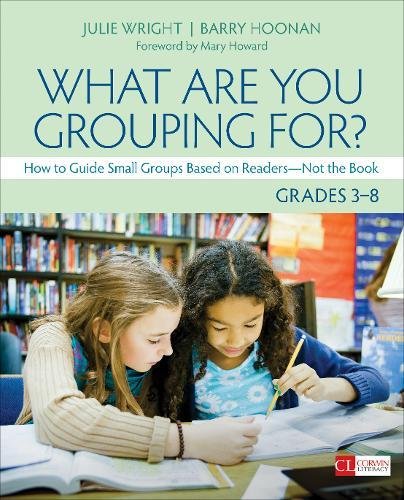Written by Julie Wright & Barry Hoonan
Do you find there are days you are left wondering … am I seeing the forest for the trees? You know, those times when you find yourself so singular in your student outlook or even in your student grouping that you might not be realizing there is the possibility of seeing separate “tress” or kids and how they might grow together to make a forest of new ideas?
In this case, proximity promotes standing back and noticing things with fresh new eyes. This new perspective can be enriched or elevated when we look across our classroom with different lenses. Educators are busy. That is why sometimes teachers, ourselves included, have seen a group of kids as singular. Intentions are good, but the busyness of schools and classrooms keep us from doing what we know to be right all of the time. Let’s take a look at some reasons why, and perhaps some entry points, into how to go about pivoting into flexible groups in order to see kids for who they are and what they need.
Curriculum-Centered Reasons - Your unit of study or curricular plan is your playbook for where you intend to go. You plan, you glance, you go. You watch over your readers and when you see the plans need adjusting, you react by pulling students together in fluid, flexible groups for ‘just in time’ feedback.
Social-Emotional Reasons - Kids show up often wearing their emotions on their sleeves. We read our students and we pivot, making decisions we believe will support them in the moment - both short term and long term. Sometimes it is finding the right ‘thought partner’, the right text, or connecting a student with a study group.
Individual Reader Reasons - Small groups place readers together for purposeful reasons - skill and strategy work, building on and sharing interests and topics, developing keen inquiries together, enhancing a reading diet, and so many more. These engaging small groups give students opportunities to voice their opinions and insights, and ask questions.
Here’s an example:
It’s Monday morning. Some students trod through the classroom door, others skip, some even drag. Shoulders say a lot about how each student is beginning their day. Slumped? Upright? I watch and greet each student. I watch as each student pulls out their books and begins reading. I watch as Elijah kicks Omari under his desk. I watch as his eyes fly side to side looking for something his book can’t deliver. I watch as he puts down Jason Reynolds’ Ghost and yawns.
I slide over to Omari first. He retells his latest Diary of a Wimpy Kid reading. I ask how his weekend was and he smiles, “Played video games with my brother.” “Awesome,” I say.
Elijah stares out into space. I move alongside him and he says,”Oh man am I tired. Dad had me up late. Watched the Lakers game with him. They’re sooo bad.” “Not as bad as the Knicks,” I respond. He lights up. “Always better than the Knicks,” he quips. He picks up Ghost and before moving over to Madison I tease, “I imagine you’re as fast as Ghost, but not Patina.” “Faster and better,” he says.
Sometimes the right move is the subtle move to connect, not correct. Sometimes it is holding your breath as a teacher until your students show their cards. Sometimes our best reading instruction is reading the texts in front of us - our kids...their attitudes, behaviors, and habits. Our connections and observations are as powerful as the actual text, or reading materials, in their hands.
Perhaps the next step is to use our observations and then gather a group around Jason Reynold’s great books like Ghost. Perhaps our next step is to have a small group around what our weekends in the city are like and what weekends in the books we read are like. Or maybe it’s time to read about the upcoming NBA playoffs and fill the small group with discussion about favorites and predictions.
Here’s the interesting part: Recognizing what’s happening in the here and now in kids’ work gives insight into possible learning invitations for the future. The power of proximity and the ability to step back to take stock of what’s in front of you can make a big difference in how you teach, how you group, and how you meet your students’ needs.

